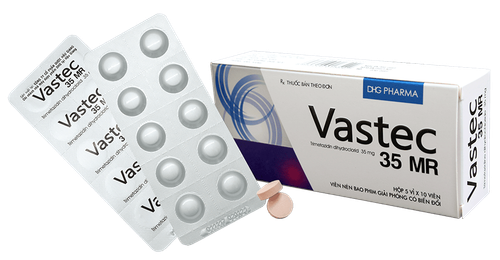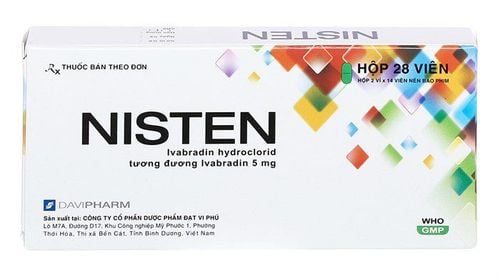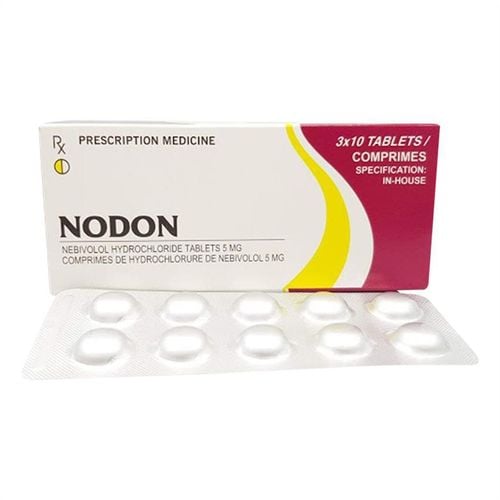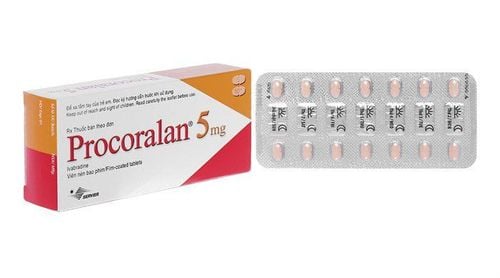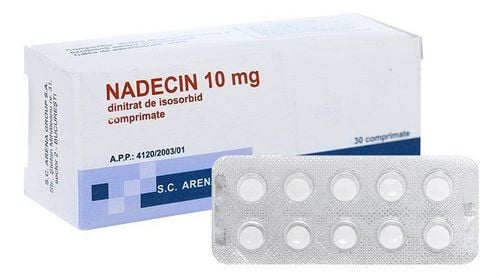This is an automatically translated article.
Pidolap is a cardiovascular drug, containing the main ingredient Clopidogrel bisulphate 75mg, prepared in the form of film-coated tablets. Please refer to the article below for more detailed information about the use and how to use the drug safely and correctly.
1. Indications to use Pidolap
Pidolap is used for primary prevention of thromboembolic disorders such as:
Myocardial infarction; Stroke ; Coronary artery disease .
2. Uses of Pidolap
The active ingredient Clopidogrel in Pidolap is a selective inhibitor of the binding of adenosine diphosphate (ADP) to its platelet receptor and leads to ADP-mediated activation of the GPIIb/IIIa glycoprotein complex, thereby inhibiting platelet aggregation.Clopidogrel's metabolism is required for inhibition of platelet aggregation, but its active metabolite has not been isolated.
Pidolap acts by irreversible modification of the platelet ADP receptor.
Pidolap is metabolised mainly in the liver and the major metabolite, the inactive form, is a carboxylic acid derivative and this derivative accounts for 85% of the circulating drug in plasma.
3. Dosage - How to take Pidolap
Drugs are used according to the doctor's prescription, depending on the medical condition, the dose may be different.
Reference dosage is as follows:
For patients with a history of atherosclerosis: Oral dose of 75mg/time/day. Prophylaxis and prevention of thromboembolic disorders in myocardial infarction, peripheral artery disease and stroke: Oral dose of 75mg/time/day. Unstable angina : The starting dose is 300 mg/day/single dose. Then use a maintenance dose of 75mg/time/day. How to use Pidolap:
The drug can be taken with or without food, because food does not affect the drug's effect.
4. Overdose of Pidolap
When overdosing Pidolap or Clopidogrel will lead to prolonged bleeding time, common acute toxicity symptoms are: Nausea, vomiting, fatigue, dyspnea and more severe gastrointestinal bleeding.
Therefore, tell your doctor or ask your loved ones to take them to the nearest medical facility immediately if you overdose on Pidolap for timely treatment.
5. Contraindications to using Pidolap
Contraindicated in the following patients:
Patients with hypersensitivity or allergy to any ingredient of Pidolap. Progressive peptic ulcer disease. Gastrointestinal bleeding. Brain hemorrhage. Severe liver failure.
6. Pidolap interaction with other drugs
During the use of Pidolap, there may be interactions with other drugs or foods and functional foods. Therefore, be aware of the following drug interactions:
Aspirin when used in combination with Pidolap may increase the risk of bleeding. Heparin, Warfarin with Clopidogrel may lead to an increased risk of bleeding. Non-steroidal anti-inflammatory drugs (NSAIDs). Tell your doctor about all medications you are taking, both prescription and over-the-counter, to minimize drug interactions.
7. Side effects when taking Pidolap
Pidolap is a relatively easily tolerated drug. However, when taking the drug, there are also some side effects to note such as:
Digestive tract disorders: Diarrhea, abdominal pain, indigestion and nausea. Skin irritation, itching. Chest tightness. Gastrointestinal bleeding. Pidolap is a cardiovascular drug that helps prevent thrombosis, thromboembolism, coronary artery disease, stroke, .... This is a drug prescribed by doctors to use according to indications, patients absolutely do not arbitrarily use it. medication to avoid adverse events. If you have any questions regarding Pidolap, please contact your doctor immediately for answers.




